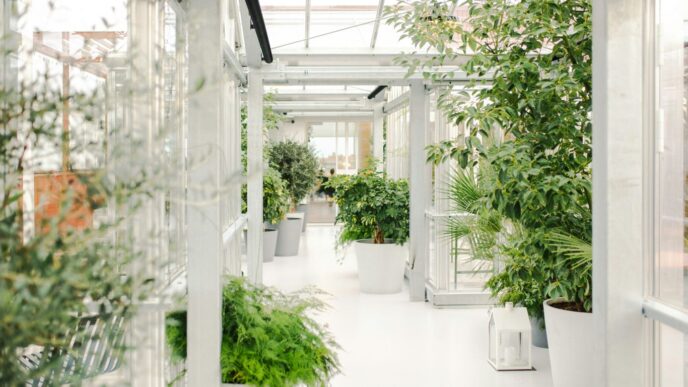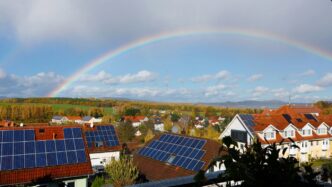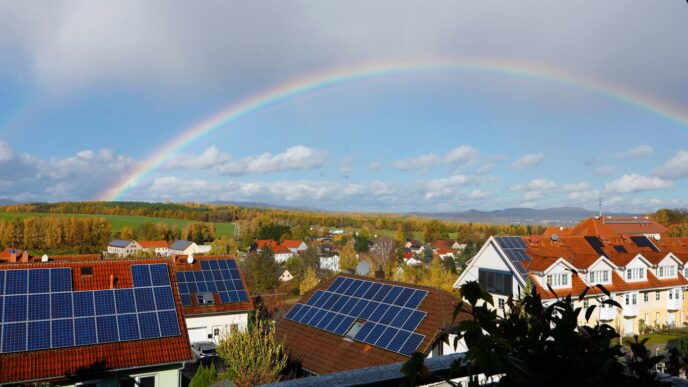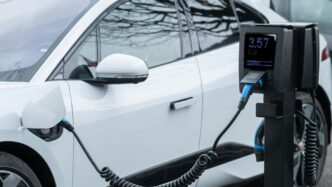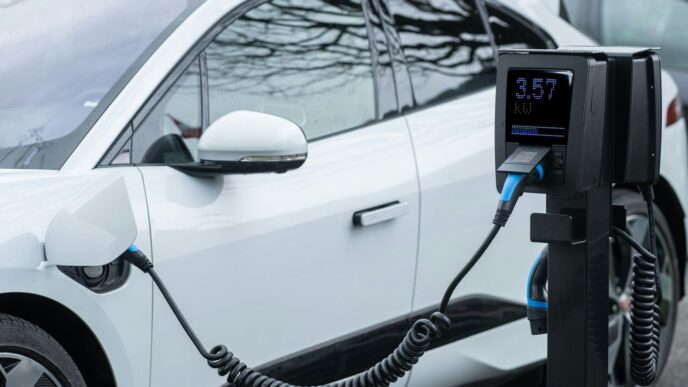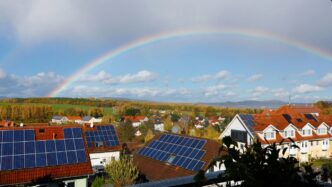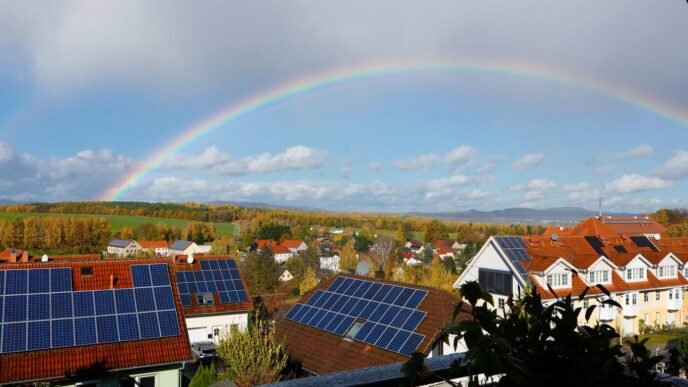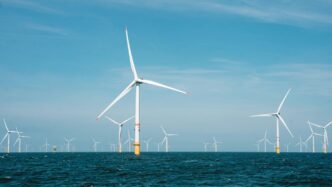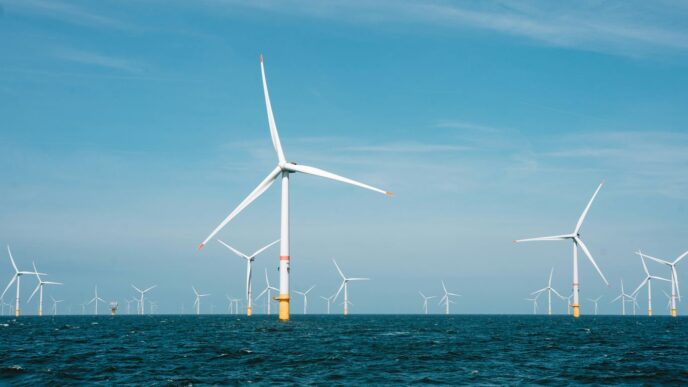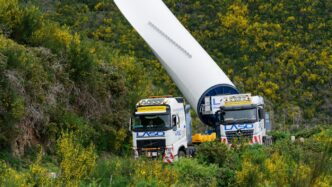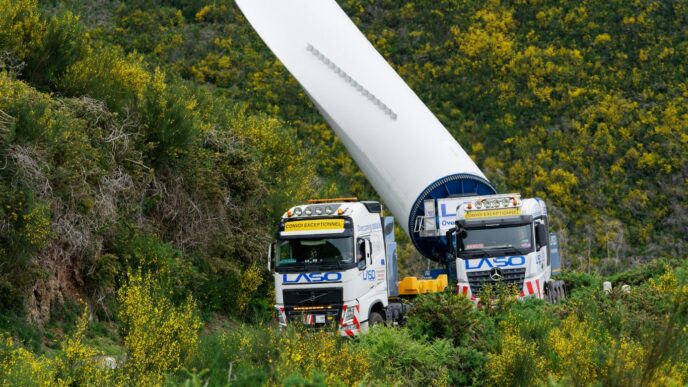The world of renewable energy is buzzing with activity, and staying on top of it all can feel like a full-time job. From massive investments in clean tech to new ways of storing power and even using seaweed to cut down on emissions, there’s a lot happening. We’ve gathered some of the latest renewable resource news and trends to give you a clearer picture of where things are headed. It’s an exciting time, with new technologies popping up and governments around the globe trying to figure out the best way to support this shift. Let’s take a look at what’s making waves.
Key Takeaways
- Global investment in clean technologies is booming, now outstripping fossil fuel spending, though much of this investment is concentrated in a few countries.
- Grid stability and the speed of permitting processes are still major hurdles for renewable energy projects, even as governments work to improve them.
- While concerns about rising costs are easing due to cheaper solar and battery components, higher interest rates can still make projects more expensive.
- Energy storage is seen as the biggest growth area for the next five years, with green hydrogen also playing a key role in cleaning up heavy industry.
- New technologies like perovskite solar cells, advanced battery systems, and AI are set to transform how we generate, store, and manage renewable energy.
Global Renewable Energy Investment Trends
It’s pretty wild to see how much money is pouring into renewable energy these days. We’re talking about a massive shift, with clean technologies pulling in around $2 trillion. That’s double what’s going into fossil fuels, which is a huge deal. This isn’t just a small bump; it’s an exponential growth spurt. The whole sector is changing fast, driven by new ideas, government rules, and what people want.
Exponential Growth in Clean Technologies
The numbers don’t lie: clean tech is booming. This surge is fueled by a mix of factors, including technological improvements that make renewables more efficient and cheaper to produce. Think solar panels getting better and batteries holding more power for longer. Plus, there’s a growing awareness about climate change, pushing both individuals and big companies to make greener choices. It’s becoming less of a niche market and more of a mainstream option for powering our world.
Outpacing Fossil Fuel Investments
This is a big one. For the first time in a long time, the money flowing into renewables is significantly higher than what’s being invested in traditional energy sources. This trend is a strong signal to the market that the future is green. It means more research and development, more manufacturing, and ultimately, more renewable energy projects getting off the ground. This shift is critical for meeting climate goals and building a more sustainable energy system for everyone.
Challenges and Opportunities in Sector Growth
Of course, it’s not all smooth sailing. While the growth is exciting, there are definitely hurdles. One of the biggest issues is the grid itself. Many existing power grids weren’t built to handle the fluctuating nature of renewable sources like solar and wind, leading to concerns about stability and reliability. We’re also seeing bottlenecks with getting new projects connected to the grid, often due to old infrastructure and lengthy approval processes. However, these challenges also present opportunities. They’re pushing innovation in grid technology, energy storage, and smarter grid management systems. Plus, the sheer scale of investment is creating jobs and driving economic growth in new areas. It’s a dynamic time, with plenty of room for smart solutions and new players to emerge.
Key Trends Shaping the Renewable Resource Landscape
The renewable energy sector is really buzzing right now, and it feels like things are changing faster than ever. We’re seeing some big shifts that are pretty important for how we get our power in the future.
Grid Saturation and Instability Concerns
One of the biggest headaches we’re running into is the grid itself. It’s getting pretty crowded, and sometimes it just can’t handle all the new clean energy we’re trying to feed into it. Think of it like a highway during rush hour – too many cars, and everything slows down or even stops. This means that even though we’re building more solar and wind farms, getting that power connected and delivered smoothly is becoming a real challenge. A lot of the grid infrastructure is also pretty old, like decades old, and it just wasn’t built for the kind of electricity flow we need today. We’re seeing delays in getting new projects hooked up, and sometimes the grid just can’t keep up, leading to instability. It’s a major bottleneck that needs serious attention.
Permitting and Regulatory Environment Improvements
On a brighter note, things are looking up when it comes to getting projects approved. The paperwork and rules can be a real pain, but we’re seeing some positive movement. In places like India and China, the governments have made it easier to get clean energy projects off the ground, and their efforts are really paying off. This means that new solar and wind farms can get built faster, which is exactly what we need to speed up the transition to cleaner energy. It’s not perfect everywhere, but the general trend is towards a more streamlined process, which is good news for everyone involved.
Government Incentives and Global Investment Imbalances
Governments around the world are putting a lot of money into clean energy, which is great. We’re talking trillions of dollars being invested to help solar, wind, and other renewables grow. However, most of this money is going to just a few places – mainly China, the European Union, and the United States. This creates a bit of an imbalance. While these big players are getting a huge boost, other countries are being left behind. It makes it harder for everyone to access clean energy technology and participate in the global shift. We need to find ways to spread these investments around more evenly so that the benefits of renewable energy can reach more people and places.
Workforce Development and Cost Dynamics
It’s no secret that the renewable energy sector is booming, but keeping up with that growth means we need people – lots of them. We’re talking about skilled technicians, engineers, installers, and more. The numbers show we need to significantly ramp up our efforts here. Analysts are saying we might need to triple the workforce by 2030, aiming for around 38 million people globally. This isn’t just about filling seats; it’s about having the right talent to build and maintain the clean energy infrastructure we’re rapidly expanding.
Addressing Skilled Personnel Shortages
So, how do we get there? It’s a multi-pronged approach. We’re seeing more training programs pop up, and companies are getting creative with recruitment. But honestly, it needs to be a bigger push. Think about it: more domestic manufacturing and new policies are creating jobs, but if we don’t have the people to fill them, that growth hits a wall. It’s a bit of a race against time.
Waning Concerns Over Rising Costs
On the flip side, the cost of renewable tech is actually getting more affordable. Solar panels are down about 35%, and battery components? Some are 30% to 50% cheaper. This is great news, right? It makes renewable projects more attractive. However, there’s still a bit of caution among professionals about prices fluctuating down the road. It’s like, ‘Great, it’s cheaper now, but what about next year?’
Impact of Interest Rates on Project Investments
Now, here’s a wrinkle: interest rates. In some places, higher interest rates are making it more expensive to borrow money for these big renewable projects. This means the overall cost of getting a project off the ground goes up, and investors become a lot more sensitive to those borrowing expenses. It adds another layer of complexity to the financial side of things, even as the hardware itself gets cheaper.
Emerging Markets and Future Growth Areas
When we look at where the renewable energy sector is headed, a few places and technologies really stand out. It’s not just about the big players anymore; smaller markets are showing serious promise, and some specific technologies are set to take off.
Countries with Highest Potential for 2025
Industry folks are keeping a close eye on several countries they think will be big in renewables by 2025. The United States is at the top of many lists, with a lot of experts pointing to its potential. China and Australia are also right up there, showing strong growth possibilities. But it’s not just these giants; places like Morocco in North Africa, Peru and Ecuador in South America, and even some areas in the Balkans are starting to get noticed for their renewable energy prospects. It seems like investment is spreading out.
Energy Storage as a Dominant Growth Area
If there’s one area that most people agree will see massive growth, it’s energy storage. This is because storing energy is key to making sure the power grid stays stable when we rely more on sources like solar and wind, which aren’t always producing. Many experts predict that battery storage systems will be the biggest growth area in the next five years. This makes sense when you think about how much we need to balance out the ups and downs of renewable power generation. The focus is also on making these storage systems better by looking into new materials, sourcing them responsibly, and finding ways to make them last longer. That way, they’re good for the planet and good for business.
Green Hydrogen’s Role in Decarbonization
Another area generating a lot of buzz is green hydrogen. While solar and storage are getting a lot of attention, green hydrogen is seen as a really important tool for cleaning up industries that are hard to decarbonize, like heavy manufacturing. It’s a zero-carbon fuel that could make a big difference in reducing overall emissions. As we push towards cleaner energy, green hydrogen is looking like a key piece of the puzzle for reaching those ambitious climate goals.
Innovations and Technological Advancements

The world of renewable energy is buzzing with new ideas and tech. It feels like every week there’s something new that could change how we get our power. These advancements are key to making clean energy work better and be more accessible for everyone.
Perovskite Solar Cells and Green Hydrogen
We’re seeing some really cool stuff with solar panels. Perovskite solar cells are getting a lot of attention because they’re supposed to be more efficient and cheaper to make than the ones we use now. Imagine solar panels that capture more sun and cost less – that’s the goal. On the hydrogen front, green hydrogen is looking like a big deal for cleaning up industries that are hard to decarbonize, like heavy manufacturing. It’s basically hydrogen made using renewable electricity, so it doesn’t produce carbon emissions when it’s used.
Advanced Storage Solutions and Floating Solar
Storing renewable energy is a big puzzle, right? Because the sun doesn’t always shine and the wind doesn’t always blow. That’s where advanced storage solutions come in. Think batteries that are safer and last longer, like solid-state and flow batteries. These could really help keep the grid stable. And for solar, floating solar farms are becoming a thing. They put solar panels on bodies of water, which saves land space. It’s a smart way to get more power without using up valuable land.
AI, Digital Twins, and Blockchain in Energy Systems
It’s not just about hardware; software is getting a major upgrade too. Artificial intelligence (AI) is being used to predict energy needs and even help with maintenance before things break. Digital twins are like virtual copies of energy systems that let engineers test things out without affecting the real-world operation. And blockchain? It’s being explored for managing energy trading and making the grid more secure. These digital tools are helping to make our energy systems smarter and more efficient.
Policy and Regulatory Drivers for Renewables
Governments and international bodies are really stepping up when it comes to pushing renewable energy forward. It’s not just about setting goals anymore; it’s about putting concrete policies in place to make them happen. This is a big deal because it directly impacts how quickly and how much we can grow clean energy.
Recommendations for Tax Credits and Subsidies
Tax credits and subsidies are like a financial boost for renewable projects. They make it easier for companies to invest in things like solar farms or wind turbines by lowering upfront costs or guaranteeing a certain return. It’s a pretty common strategy, and many industry folks think it’s one of the best ways to get more projects off the ground. Think of it as a government saying, "We really want this to happen, so here’s some help."
- Making tax credits consistent: Projects need to know that these incentives won’t change drastically year to year. Predictability is key for long-term investment.
- Targeting subsidies effectively: Not all subsidies are created equal. Focusing them on areas that need the most help, like new technologies or grid upgrades, can have a bigger impact.
- Streamlining application processes: Sometimes, just getting the paperwork done for these incentives can be a headache. Making it simpler means faster deployment.
Phasing Out Fossil Fuel Subsidies
This is a bit more controversial, but a lot of people in the renewable space agree that it’s necessary. For years, fossil fuels have gotten a lot of financial support from governments. Shifting that money, or at least stopping the flow of new support, to renewables helps level the playing field. It’s about making sure that clean energy can compete fairly based on its own merits, not on who’s getting more government cash.
Setting Clear Renewable Energy Targets
Having clear, ambitious targets is like giving the industry a roadmap. When governments say, "We aim to have X% of our energy from renewables by Y year," it sends a strong signal to investors, developers, and even the public. It creates a sense of urgency and direction. These targets need to be backed by actionable plans to be truly effective.
Here’s a look at how some regions are doing:
| Region | Target Year | Renewable Energy Target (%) |
|---|---|---|
| European Union | 2030 | 42.5 |
| United States | 2035 | 50 |
| China | 2030 | 35 |
These kinds of goals help drive innovation and investment, making sure everyone is working towards the same clean energy future.
Sustainable Practices and Environmental Considerations

Agri-PV and Floating Solar Viability
Farming and solar power might seem like they don’t mix, but there’s a growing trend called Agri-PV, or agrivoltaics. It’s all about putting solar panels over farmland. The idea is that the panels can provide shade for certain crops, reducing water needs, while still generating electricity. It’s not a one-size-fits-all solution, though. We need to figure out which crops do best with this kind of shade and how to set up the panels so farmers can still work their land easily. Think of it as a double win: more food and more clean energy. Floating solar, or ‘floatovoltaics,’ is another interesting one. These are solar panels set up on bodies of water, like reservoirs or lakes. They can be cheaper to install than land-based solar farms and can even help reduce water evaporation. The big challenge here is making sure they can handle the weather and are easy to maintain without messing up the water quality. Finding cost-effective ways to install and keep these floating systems running is key to their wider use.
Offshore Wind and Marine Environment Maintenance
Offshore wind farms are getting bigger and more powerful, which is great for clean energy. But putting them out in the ocean comes with its own set of environmental questions. We need to think about how they affect marine life, like whales and fish, and the overall health of the ocean ecosystem. Maintenance is also a big deal. These structures are out in tough conditions, so keeping them in good shape requires special ships and trained crews. This can get pretty expensive and has its own environmental footprint. So, while offshore wind is a huge part of the renewable future, we’ve got to be smart about how we build and maintain them to minimize any negative impacts on the sea.
Reducing Methane Emissions with Feed Additives
Methane is a potent greenhouse gas, and a significant amount of it comes from agriculture, particularly from livestock like cows. Scientists are looking into ways to reduce these emissions without hurting the animals or the quality of their products. One promising area is using special feed additives. Some studies have shown that adding certain ingredients to cattle feed can significantly cut down on the methane they produce during digestion. It’s like a dietary change for cows that helps the planet. This approach could be a game-changer for reducing agriculture’s climate impact. It’s not just about the cows, though; there’s also work being done on better ways to capture methane from other sources, like landfills and wastewater treatment plants, turning a problem into a potential energy source.
Wrapping Up: What’s Next for Renewables?
So, that’s a look at what’s happening in the world of renewable energy. It’s pretty clear things are moving fast, with a lot of money going into clean tech and new ideas popping up all the time. We’re seeing big growth, but there are still some bumps in the road, like making sure the power grid can keep up and getting enough trained people. Still, the overall feeling from folks in the industry is pretty positive. Keep an eye on energy storage and new ways to use solar and wind power. It’s an exciting time, and staying informed is key as we all work towards a cleaner energy future.




